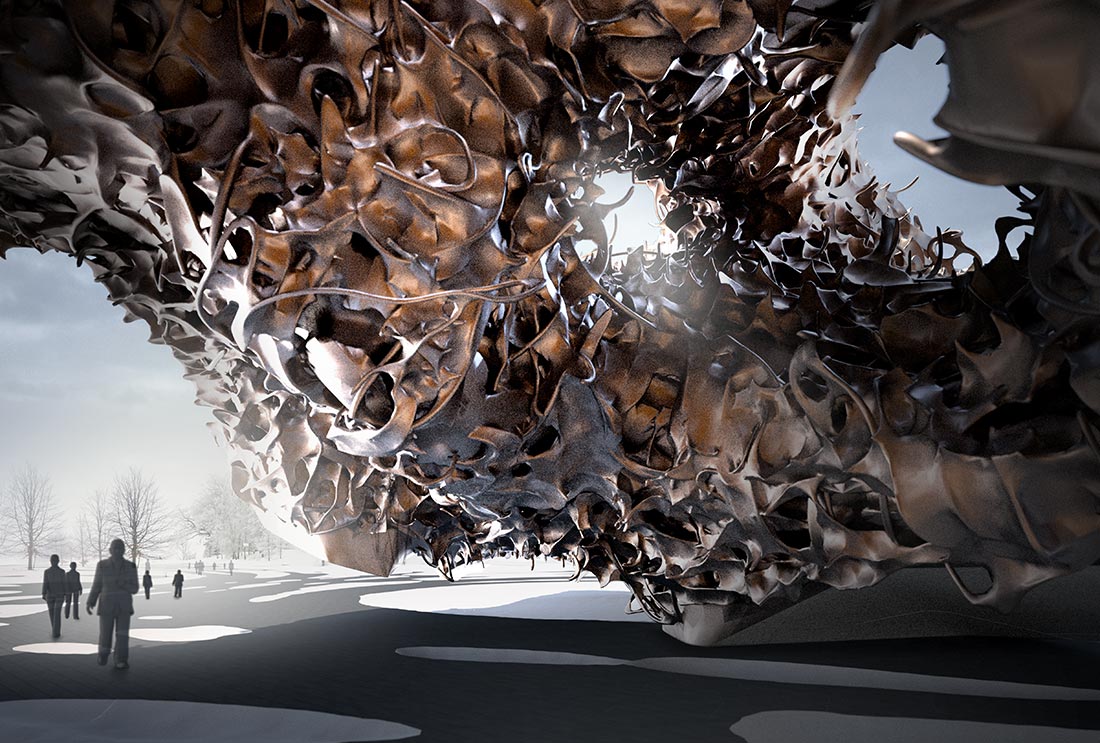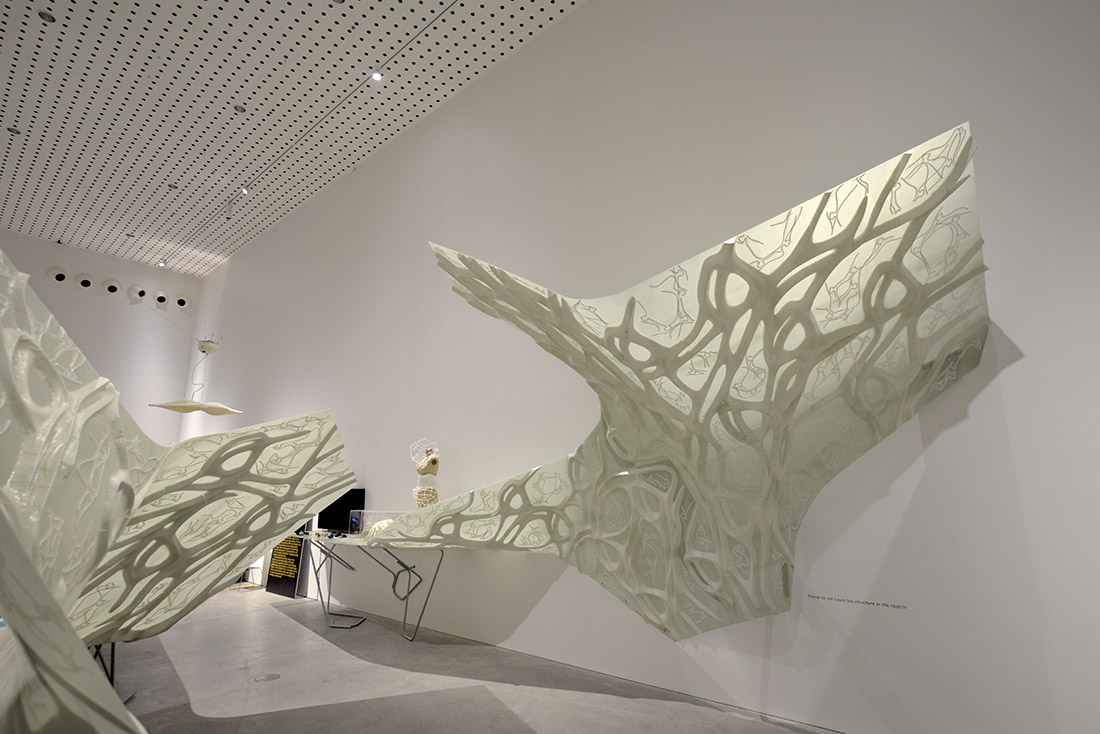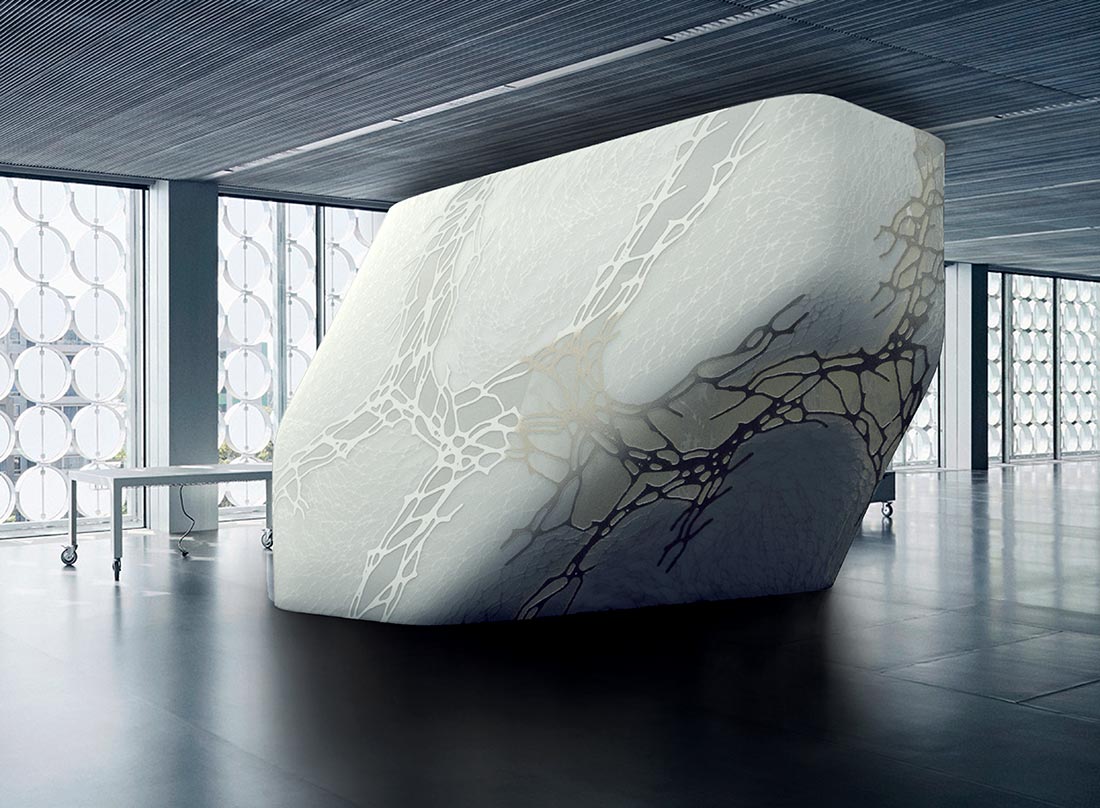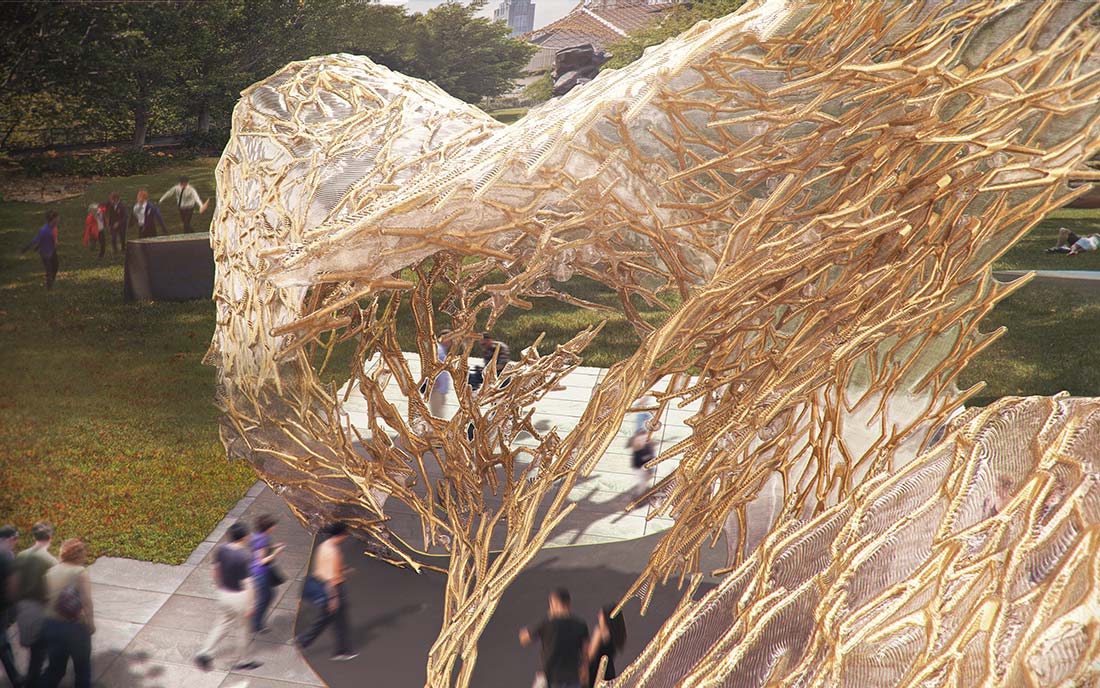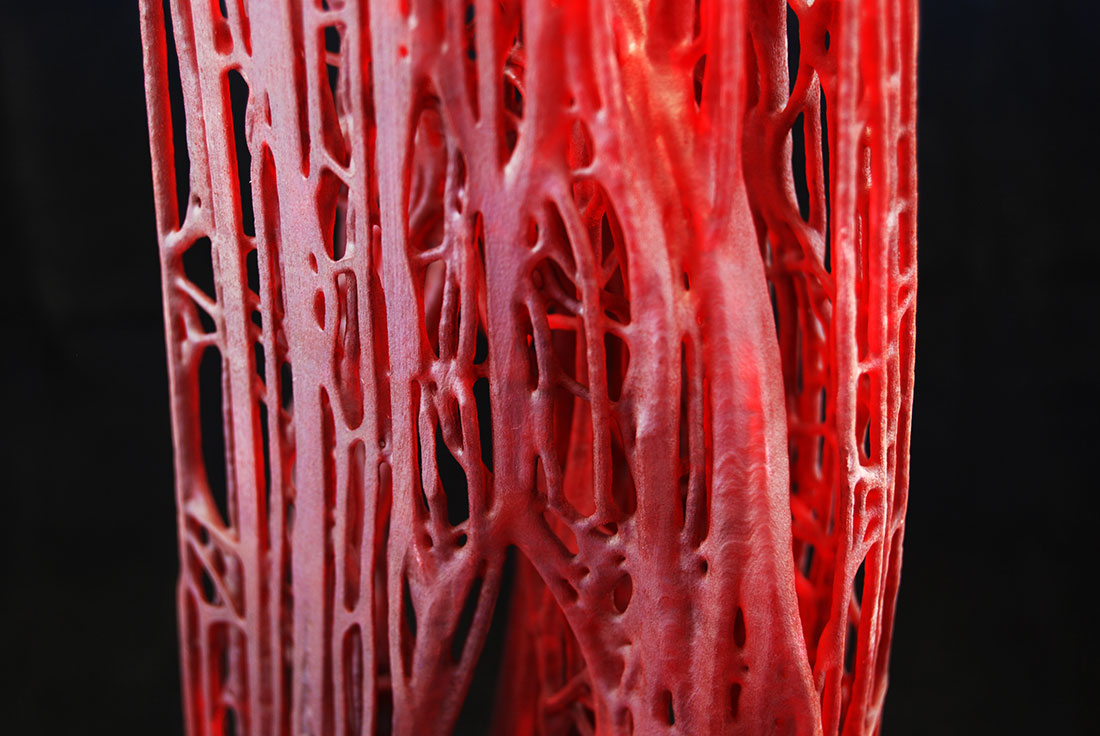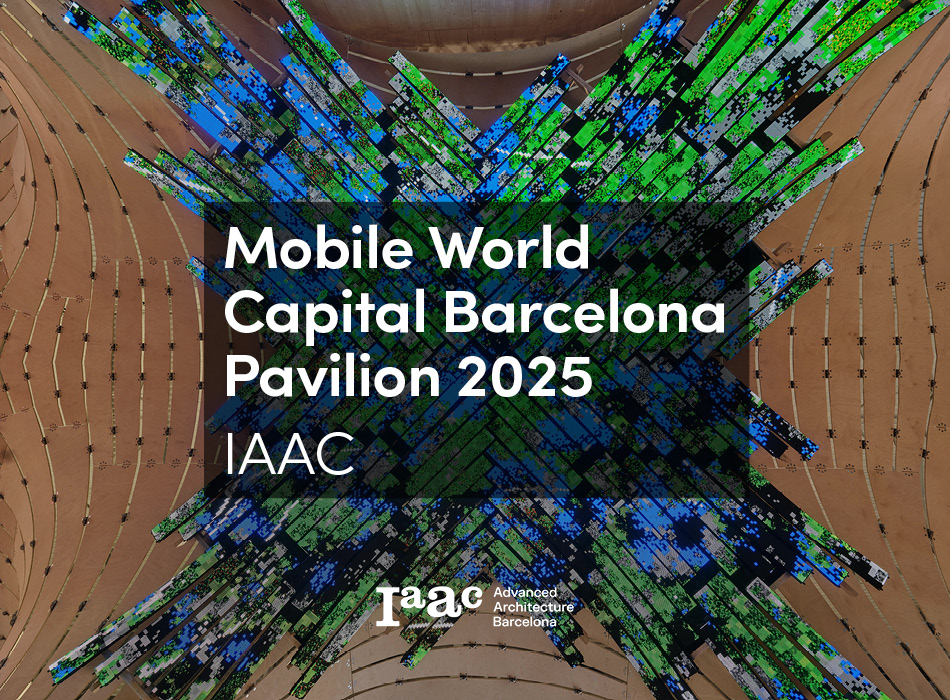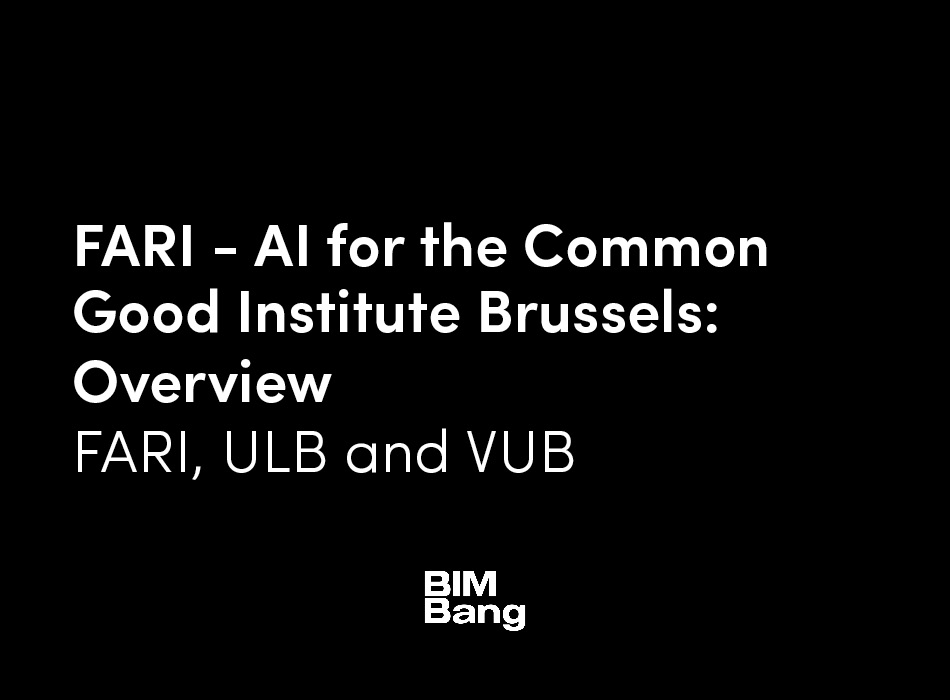Emergent processes of formation create intensive, heterogeneous, intricate, complex phenomena. These processes have come to define our contemporary understanding of the nature of becoming, which stands in contrast to established notions of design and intention.
The experimental design research posited here speculates on this relationship between emergent processes of formation and architectural design intention, and explores the strange and specific qualities of the architecture that is drawn out of this interaction.
This design research operates within a larger architectural and cultural concern for complex systems and their role in algorithmic design processes. The original contribution of this work to the larger milieu is the articulation of a design process in which architectural intention is embedded within emergent processes. This is a reconceptualization of design intention as behaviors that interact in a self-organizing process of formation – Behavioral Formation. Intention, in this process, is recast as discrete, micro-scale architectural decisions, relationships, or procedures that are encoded as behaviors within multi-agent algorithms. The local interaction of these agents self-organizes architectural design intention at the macro-level.
Behavioral Formation develops, and exploits, an intricate intertwining of intention and emergence. The design intention of the architect is both encoded within algorithmic systems of emergence and operates externally to the algorithm in a feedback loop conditioned by explicit decisions and the evaluation of emergent outcomes. This approach is an important shift from the dominant contemporary architectural use of algorithms where design intention is limited solely to iterative evaluation. The implications of working through these highly iterative, non-linear, computational design processes are manifest as a compression of hierarchies, a blurring of geometric types, and the uncoupling of geometric elements from architectural roles.
RMIT Mace, 2015-2016. Detail of the titanium printed fibrous mass.
This body of work aims to establish both a behavioral approach to architectural design and to tease out the strange specificity[1] of its architecture through the interaction of self-organization and subjective intention. Ultimately, the ambition of this architectural design work is not processual; instead, it is concerned with the specific qualities, characteristics, and affects of the architecture created through this approach that exceed—but are integrally dependent upon—their generative processes.
Emergence
Complex systems are created through the interaction of elements that gives rise to behavior greater than the sum of its parts. The self-organizing behavior of these systems generate complex order and emergent phenomena. As Manuel DeLanda has pointed out, these have been playing an increasingly important role in our conception of formation for several decades: ‘We are beginning to understand that any complex system, whether composed of interacting molecules, organic creations or economic agents is capable of spontaneously generating order and of actively organizing itself into new structures and forms’.[2]
As a discipline engaged in designing complex organization, structures and form, emergent processes of formation are increasingly being explored as potent techniques within architectural design.[3] Instrumentalizing these processes within architecture is an intellectual engagement with complexity and with the processes of formation that operate within the world. The compelling aspect of complex systems for architects, however, is not the theoretical explanation of becoming, but the phenomena of emergence and its intensive, intricate, and affective capacities.[4] Examples of these emergent characteristics include the turbulent nature of tornadoes, the intricate networks of slime mold, and the complex order of cellular automata rule 110.[5] The application of emergent processes to architectural design has the capacity to create spaces that are experienced in a fundamentally different way to the spaces of Classicism or Modernism—affects defined by an emergent rather than reductive order.
Complex systems have permeated the contemporary psyche, being understood through the cities we live in, the social media through which we communicate, and the algorithms that suggest what we buy, listen to, or read. This milieu has given rise to a popular understanding of authorship that has shifted significantly over the past fifteen years. Open source, crowd sourcing, and notions of collective intelligence have undermined the individual author and formed a new understanding of distributed authorship.[6] While working through similar underlying complex systems, the approach described here is not about distributed authorship, but rather about the distribution of the author’s design intent and its reconceptualization as behaviors that interact in a non-linear system of self-organization.
Babiy Yar Memorial, 2010. Bronze memorial space.
Intention
The volatile nature of self-organizing processes represents an apparent conflict with the established notions of architectural intention. In establishing the modern concept of architectural design, Leon Battista Alberti separated design from craft through notation, establishing the authority of the master architect that is still a dominant understanding within the discipline.[7] While the certainty of authorship has come under various attacks, the relationship of authorship to digital generative processes are most relevant here. Greg Lynn’s seminal animate form projects of the mid-1990s reconceptualized design processes through animation. This approach drew criticism for the perceived loss of authorship, or intention, in working with dynamic processes, including issues such as the ‘stopping problem’.[8] The problem, however, was not insufficient logic for stopping the process; on the contrary, it was the difficulty of encoding subjective design intention—the architect’s will—within the systemic animate processes.[9] In Lynn’s animate form projects, design intention operates through, or is translated into, a series of simulated natural forces external to the pliant surfaces that they inflect. This is a morphodynamic process in which the surfaces are receptors of formal influence, and the degree of design intention is limited by the capacity to translate this intention into physical forces, such as winds, gravities and vortices. A similar limitation is evident within another important influence on this work—the form-finding ‘material computation’ of Antoni Gaudi and Frei Otto [10]—where generative authorship is limited to physical laws and material properties. The inability to embed architectural decisions within a generative model remains a primary limitation of contemporary algorithmic processes, and substantially defers architectural intention to the evaluation of these generative models.
At this point it is worth defining ‘intention’ in further detail. Intention is used here to describe an architect’s imperatives, desires, sensibilities, or design criteria. Intention can be propositional, as a desire is, or a constraint, such as a criterion. The sensibility of an architect is an accumulation of their tropes, biases, and tendencies—their intuition. Intention as discussed here relates to aesthetics, form, program, structure, ornament, affects, or any other aspect of architecture.[11]
In much of contemporary algorithmic design, processes are adopted, and occasionally adapted, from biology or computer science and applied to architecture, where the dominant interface with architectural intention is the evaluation of the iterative outcomes of the algorithm. These adopted algorithms do not operate on any architectural logic. Instead, it is the architect’s role to adjust their parameters iteratively in an attempt to navigate their outcomes to a successful architectural result. A further retreat from intention within computational design is in the prevalent ambition to remove the designer from this feedback loop, automating evaluation [12] based on quantitative criteria, such as structure, in an attempt to optimize the engineering performance of buildings.
Behavioral Formation instead posits a primarily morphogenetic [13] design methodology in which distributed architectural intention self-organizes in a generative algorithmic process.
The self-organized intention that emerges from this process is cast into a feedback loop with more direct intention through qualitative evaluation and interaction with explicit design decisions. Consequently, the primary form of intention operates at the micro-scale of algorithmic behavior and is conditioned by macro-scale decisions. This process is a balance between volatile, self-organizing, intention that is encoded within the algorithm, intuitive evaluations, and more stable, explicit decisions. All of these forms of intention are subjective and qualitative; however, the intention encoded within the behavior of the algorithm operates systemically, while the evaluation of its outcomes operates intuitively.
This algorithmic approach draws on a subset of complexity theory known as ‘swarm intelligence’, which can be defined as the local interaction of autonomous agents from which collective behavior emerges.[14] The translation of this logic into architectural design involves encoding the architect’s design intent as numerous discrete behaviors distributed within a population of agents; it is the local interaction of these agents that leads to the selforganization of a meta-level design intention. The design intention embedded within these behaviors can range from specific tectonic decisions to more abstract behaviors designed to produce emergent behavior at a larger scale.
This behavioral approach to architectural design enables an integration of intention with the volatility of emergence. This is not a process of creating emergent form that can later be applied to, or crafted into, architecture. It is a methodology of creating a specific and intentional architecture that is designed through, not after, emergence. The implications of this behavioral approach have been explored over the past seventeen years through the architectural projects described here.
Composite Wing, 2014.
Complexity
Behavioral Formation draws on the volatility of complex systems that operate at the ‘edge of chaos’.[15] These far-from-equilibrium [16] states have the greatest potential for emergence and the generation of new forms and organizations, generating behavior that is not given within their starting conditions or parameters. Working with volatile systems is inherently experimental. These processes are never pure or essentialist; they create chaotic conditions and catastrophic shifts. The intensive processes at work in Behavioral Formation inextricably tie the process and object, imbuing the emergent forms with intricate, complex, and affectual qualities. This intensity is evident in the fibrous mass of the RMIT Mace or the bronze memorial space of the Babiy Yar project [17], where the intricate organization of the bodies melts into a continuous, highly differentiated surface.
There is no single scientific definition of complexity, while emergence is even harder to define. As John Holland points out: ‘It is unlikely that a topic as complicated as emergence will submit weakly to a concise definition, and I have no such definition to offer’.[18]
Despite James Crutchfield’s claim that ‘Defining structure and detecting the emergence of complexity in nature are inherently subjective’, the argument posited here is that emergence is a real phenomenon independent of the observer—although not quantifiable.[19] Stephen Wolfram demonstrates that the edge-of-chaos conditions in cellular automata cannot be quantitatively evaluated or recognized: they are qualitative.[20] This is crucial for design, as it foregrounds the importance of the architect’s interaction in teasing out emergent qualities from complex systems, given that the complexity of a system is not a determinant of its qualitative emergent characteristics.
RMIT Meeting Pavilion, 2015.
Specificity
While the design processes posited here are algorithmic and consequently systemic, the architectural intent and underlying behaviors are highly subjective. These architectural decisions relate to such concerns as the topology of space, intricacy of structure, and the expressive characteristics of form. These qualitative concerns exceed the pragmatic issues of building science—and, in this regard, Behavioral Formation departs significantly from many computational design approaches that relinquish design intent to the pragmatics of optimizing building performance. The performance of architecture, relative to environmental, structural, or fabrication imperatives, is necessary, but it is argued here that these should not be elevated to the position of the driver of architectural design. The projects contributing to this body of work negotiate pragmatic concerns; however, their subjective, intuitive architectural intention is never abandoned to a set of pseudo-objective performance criteria.
An argument for generative design is often made by using the somewhat dubious claim that the process overcomes preconceived architectural forms, organizations, or tectonics. The work here does not claim to be beyond preconception. However, the generative processes do produce a specific characteristic of form and articulation that resists being explicitly drawn or modeled. These characteristics, and their negotiation with more explicit intention, lead to the strange specificity of the projects.
Designing through volatile algorithmic processes shifts the nature, but not the degree, of authorship. Design intention within behavioral processes of formation does not relate to the exact dimension or topology of architecture, but instead to the characteristics of architecture: those that emerge from the behavioral process. Form remains within flux for long periods through these processes, while emergent formal characteristics are more resilient and reoccur across iterations.[21] This is a shift in focus from designing the form of the object to designing the nature of the object, where the form is teased out as an emergent property of the process.
It is the emergent properties of self-organizing systems and their affectual capacities that make them compelling. However, the ability of these systems to negotiate complex problems, such as the self-organization of programmatic or structural systems, is a significant contributor to their robustness as architectural design tools.[22] The capacity to negotiate pragmatic concerns within a highly volatile process enables an integration of both the wild and the practical.
The design strategies posited here are not intended to create indexical [23] forms or purist outcomes from complex systems.[24] Instead, these projects are the outcome of subjective decisions applied in a process of negotiating between emergent behavior of complex systems, pragmatic concerns, and direct formal and aesthetic intentions. Subjective intention engages directly in this design process through a strategy of strange feedback, in which the outcome of direct modeling processes becomes the input to algorithmic processes, and vice versa. It is a process of constant feedback between bottom-up algorithmic processes and top-down modeling. This recurring operation iteratively creates a synthesis or correlation of direct and generative operations.
Subjective formal and aesthetic intention operates both external to, and integrated within, the algorithmic behavioral process of formation. One reoccurring trait, which is external to the process, is the mute, faceted, geological forms that are employed in several projects [25] as an attempt to resist the discrete reading of separate architectural elements, and to destabilize the building’s relationship to the ground.[26] Although the geological example is a formal language appropriated from outside architecture, other tendencies emerge from the processes themselves. These emergent tendencies, or characteristics, are coaxed out and refined to become a set of procedural operations, which are redeployed across multiple projects. The agentBodies [27] research began as an experiment in blurring the relationship between line, component, and surface. The capacity of this process to generate intricate and ornamentally expressive woven tectonics has since become the focus of the strategy, which has been redeployed in projects including Flinders Street Station and the NGV Pavilion.[28]
NGV Pavilion, 2015-2016.
The tendencies and limitations of the agent-based algorithms developed within this research have been exploited, exaggerated, and developed into a highly personal formal language. This language of hairy, fibrous, blurred, and geological articulations is not an indexical outcome of agent-based processes, but the interaction of individual subjectivity and the generative capacity of these algorithms.[29] As this research has evolved, the concern has shifted from the development of a broadly applicable behavioral design process to the specificity of the projects and their strange qualities. These qualities are teased out of the interaction of behavioral processes and somewhat idiosyncratic intention.
The design strategies and projects posited here have a complex relationship to biology. The algorithms that underlie this work are not dissimilar to those that underlie many natural phenomena, such as the flocking of birds, the behavior of social insects, or slime mold.
Although, it is the logic of collective behavior emerging from local interactions that has been appropriated from swarm intelligence rather than any specific biological behavior. Similarly, the geometry that is created by the accumulation of many small strands though the fibrous assemblages strategy has been informed by an understanding of the fibrous character of biological material from electron microscope imaging. However, there is no direct imitation of specific biological conditions or processes. Instead, these images become another way of conceptualizing and describing geometry: a shift from the mathematical description of surface to the computational accumulation of vectors.
Behavioral processes of formation work by accumulating architectural geometry or matter, such as the assemblage of strands or agentBodies. This description of architectural matter is characterized by its small scale relative to the whole: a network of interconnected parts that weave together to form irreducible assemblages. These interconnected parts have specific, designed, geometry, distinct from simple computational geometry such as voxels or particles. However, these tectonic assemblages are not compatible with the way in which we currently construct buildings, as they do not privilege surface or the standardized building components used in construction.
The feasibility of behavioral processes of formation is dependent on the development of procedural approaches to construction that mirror this logic of design. A key aspect of this is the appropriation of an emerging set of direct-deposition and robotic fabrication techniques. Reprogrammable robotic construction enables intricate, non-standard assembly of parts, while direct-deposition techniques open up a new space of formal possibility. These techniques allow the accretion of material to be thought of in a similar manner to the digital process—as behavioral.[30] The logical extension of this behavioral conception of the robot is explored in the stigmergic robotics strategy. This approach operates by programming behaviors directly to a robot that senses and responds to the accretion of material in real-time, creating a feedback between computational and material behavior.[31]
Implications
Complex systems are inherently processes of negotiation. The non-linear interactions within behavioral processes of formation simultaneously embed multiple criteria or intention within a single form. This negotiated whole departs from the discrete articulation of architectural elements and roles that has dominated architecture from antiquity to Modernism. The mutual interconnectedness of architectural roles blurs the distinction between parts and creates irreducible assemblages.
This interconnectedness extends to drawing conventions. Modernism rejected the privileged perspective of the Renaissance in favor of the objectivity of the axonometric, and in particular the exploded axonometric (the notational device of discrete articulation). The architecture of Behavioral Formation is interconnected and irreducible; it cannot be drawn with exploded axonometrics. Instead, it is described through its behavioral logic, tectonic prototypes, and saturated images intended to convey emergent affects.
Behavioral Formation resists known architectural expressions by undermining the hierarchies and recognition of architectural signifiers. The geometry of Behavioral Formation does not relate to a given architecture role: it is not a beam, column, or façade, but potentially a negotiation of all these. These roles do not have a linear relationship to geometry within the design process; instead, geometry negotiates between these roles, recast as behaviors, creating hybrid geometries embedded with multiple intents. The concrete shell of the Fibrous Tower [32] is simultaneously structural, ornamental, sun shading, and inhabitable. This separation of architectural role from geometry is amplified through the repetition of the same process of formation at multiple scales—a polyscalar tectonic strategy. Within this process the role of geometry changes from one scale to another (for example, from spatial to ornamental), while the geometric expression is consistent.
Fibrous Tower 2, 2009. Shell detail.
This blurring of roles extends to the blurring of geometric descriptions. The generation of geometry from the bottom up—from fibrous assemblages—blurs the distinction between line, component, and surface. These conditions are no longer conceptually different; rather, they are different instances of the accumulation of the same geometry. A line is the linear accumulation of points rather than a mathematical description of connectivity between two points. Likewise, a surface is the matting together of lines or fibers in a manifold topology, rather than the description of u and v isoparameters.[33] This enables architectural geometry to subtly shift or blur between surface, line, and component.
Redundancy is a characteristic of complex systems, such as the routing networks of the internet, or the minimal path networks of slime mold. The role of redundancy in Behavioral Formation is in opposition to contemporary concepts of optimization that isolate and quantitatively evaluate specific minima or maxima conditions [34], such as structural efficiency or solar gain. Discretely articulating and designing a series of systems [35] is contrary to strategies such as fibrous assemblages that negotiate between different architectural roles such as enclosure, structure, and ornament within the one body of geometry—strands. The structural excess of a fibrous assemblage operates ornamentally, while the ornamental excess may operate structurally. This redundancy is also inherently robust, as it can deal with change that the optimization of specific conditions cannot. The integration of multiple roles into a single malleable geometry creates efficiencies, such as the integration of skin and structure in a semi-monocoque. This is not, however, an argument for the efficiency or optimal capacity of Behavioral Formation;[36] instead, it is the qualitative characteristics of these redundant conditions that are of interest. There is an ambiguity in the geometry of the Fibrous Tower 2 and the Fibrous House:[37] the redundancy of the fibers blurs the distinction of structure, skin, and ornament, in favor of a reading of intricate mass.
Through the development of this body of work, new problems are constantly created. The most significant of these is global ignorance, which arises from privileging the local interactions of agents to the exclusion of global conditions—a necessary protocol for creating complex systems. This local interaction of agents is problematic in the design of architectural concerns that rely on a global-scale comprehension of the architectural project, such as enclosure or structure. This limitation has become the catalyst to develop strategies to deal with these fundamental architectural concerns and open up new experimental potential. For example, the strategy of manifold swarms was developed to deal with the inability of agents to know their topological relationships, while the agency of structure is a response to the need for global structural analysis within emergent design processes. Through the development of these new strategies, specific architectural characteristics emerge.
Behavioral Formation is not an attempt to represent the complex nature of formation in the world. Rather, it is an attempt to instrumentalize this understanding as a generative process. This is a concern for an emerging generation of architects. However, it is not enough to use complexity as a generative tool, which is then applied to the body of modernity—a trait common among others of this generation. Instead, the ambition of this work is to explore the architectural possibilities that emerge from this behavioral approach, and their wider architectural implications. These implications for architectural form, tectonics, spatial conditions, characteristics, and affects should be evident within, and best understood through, the projects themselves. The interaction of non-linear computational processes and subjective design decisions creates an architecture that is rich with intricate order and the strange characteristics that emerge from these processes.







